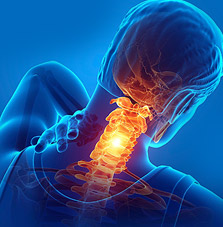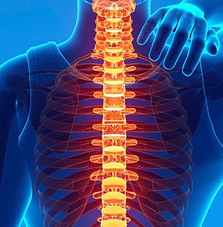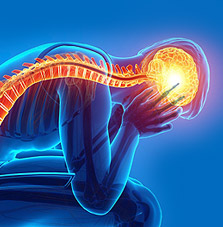
MRI for Whiplash
An MRI for whiplash, neck injuries caused by the head being violently thrown back, forward or sideways, usually in a car crash, fall, or collision on the sports field, can reveal damage to ligaments, tendons, nerves, and bones.
Studies have identified facet joints in the back of the neck as common sources of pain following whiplash injuries. People can also experience headaches, these are called cervicogenic headaches, and are probably caused by tension in the muscles that attach to the skull at the back of the head.
Whilst most whiplash injuries will get better within a couple of weeks, some people can suffer more persistent symptoms that can last a year or longer, including chronic neck pain, stiffness, headaches, and restricted neck movement. Whiplash injuries are estimated to cost the UK insurance industry more than £2 billion a year in pay outs.
Most MRI scans are performed months or years after the whiplash injury and usually do not show any signs of damage. MRI scans that are performed within days of the injury sometimes show damage to the muscles or ligaments, but this is a small percentage of patients. Performing upright flexion and extension MRI scans in the early days after injury has greater potential to identify an injury to a muscle, ligament or facet joint, than delayed images that are not weight-bearing.

Medserena’s MRI for Whiplash
Medserena’s MRI scans for whiplash are painless and performed in an upright scanner with the patient in a seated position, with a head coil over the head.
This piece of equipment is open in two places at the front allowing you to still see the radiographer, who is in continuous contact with you, minimising the feeling of being enclosed.
Upright MRI scans are less intimidating for people who suffer from anxiety about being in confined spaces or suffer from claustrophobia, a condition that affects around 10 per cent of the population
The open MRI scan gives a 3D detailed picture of all structures in the neck region, detecting problems such as ligament strain. MRI radiographers can pay specific attention to the craniocervical junction, a complex group of ligaments and tissue, where the bones of the spine attach to the base of the skull.
An MRI for whiplash may identify instability or damage to the atlanto-occipital joint between the top two vertebrae bones in the cervical vertebrae at the top of the spine and below the skull (they allow the nodding of the head movement).
MRI scans for Whiplash
Other benefits of a Medserena MRI for whiplash
Open MRI scanners are a stress-free alternative to using a conventional enclosed tunnel MRI scanner, providing comfort and reassurance for people who suffer from anxiety or claustrophobia. Sitting upright is more comfortable for patients and the open front means patients can speak to a friend or relative or watch television throughout as distraction.
Open MRI scans can also accommodate some larger/heavier patients who might have difficulty fitting comfortably into a conventional tunnel scanner, as they can take weights of up to 35 stone (226kg). Suitability will depend on the patient’s build and the area of anatomy that needs to be scanned.
Available to self-pay clients, clients with private health insurance and NHS patients where prior funding has been agreed by a clinical commissioning group.
Location for Truly upright Spine & Back MRI scans
Our scans can be performed in London or Manchester
From only £1,495.00
Prices are self-pay only, inclusive of Radiologist report
Same day appointments
Many MRI scans can be booked for the same day



